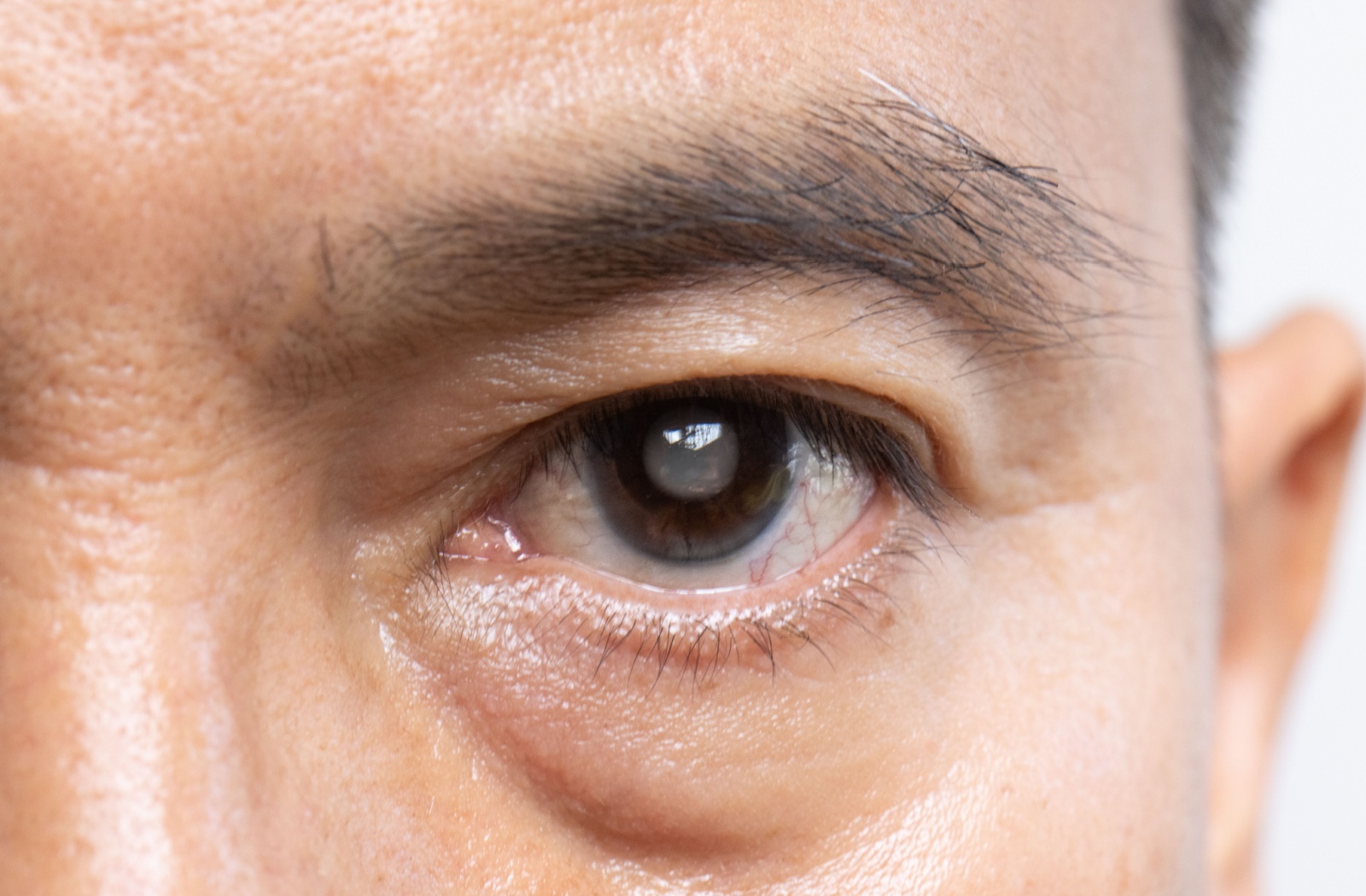We typically expect our vision to get worse as we age. Even those who didn’t wear glasses as kids or young adults know they’ll likely need reading glasses due to the body’s natural wear and tear. Fortunately, regular comprehensive eye exams can help us stay on top of any eye-related issues we may experience, like cataracts, to keep our vision in good condition for as long as possible.
Cataracts result from clouding the eye’s natural lens, leading to blurred vision and, if untreated, blindness. There are three primary types of cataracts: 1) nuclear sclerotic, 2) cortical, and 3) posterior subcapsular, each of which impacts a different part of the eye’s lens. Cataracts are primarily age-related, affecting millions of people worldwide, but can occur for other reasons too.
The Three Types of Cataracts
Cataracts are a leading cause of blindness in Canada. When the usually transparent lens in your eye hardens and becomes cloudy or opaque, that’s a cataract. In most cases, they develop without pain and obscure your vision gradually as they progress.
While the types of cataracts are divided based on the part of the eye anatomy they affect, many patients develop opacity in multiple parts of their eye, resulting in overlapping classifications of their cataracts.
Nuclear Sclerotic Cataracts
Nuclear sclerotic cataracts are the most common type of cataracts. They develop in the nucleus, the central part of the eye’s lens, and slowly cause yellowing and hardening over many years, making it hard to see distant objects. The lens tends to increase refractive power as the core hardens, causing nearsightedness. Over time, this hardening expands to the other layers of the lens.
Symptoms of nuclear sclerotic cataracts can include:
- Decreased ability to see further away (nearsightedness/myopia)
- Poor vision in low-light settings (e.g., nighttime, dark rooms, etc.)
- Colours appear less vibrant or may appear similar
- Sensitivity to glare
- Double vision
Since cataracts require several years of development before affecting vision, maintaining routine eye exams with your regular optometrist can help monitor eye changes over a longer period.
Cortical Cataracts
Cortical cataracts can be particularly common for those with diabetes. They form in the lens’ outer layer, or the cortex, gradually expanding until they look like “spokes” or streaks from the outside of the lens to the centre. These cracks cause the light entering the eye to scatter, resulting in glare, depth perception, and contrast issues. However, the impact these cataracts have on vision depends on how close the cracks are to the centre of the eye.
Symptoms of cortical cataracts can include:
- Increased sensitivity to glare
- Decreased distance and near vision
- Difficulty reading or seeing fine details
Cortical cataracts can develop over several years, though many progress quickly over just a few months. Early detection through routine eye check-ups can help manage cortical cataracts effectively.
Posterior Subcapsular Cataracts
Posterior subcapsular cataracts form at the back of the lens, blocking the passage of light to the retina, primarily impacting reading and night vision. These cataracts develop beneath the eye’s lens within a small sac that encloses the lens.
Symptoms of posterior subcapsular cataracts can include:
- Rapidly diminishing vision
- Decreased ability to see close-up (farsightedness/hyperopia)
- Increased sensitivity to glare
- Difficulty seeing in bright light
These cataracts progress faster than other types, typically becoming noticeable within months. A comprehensive eye exam can detect them before they severely impact vision.
Prevention & Screening
Cataracts are usually found in those over 60 but can occur in almost everyone as they age. They tend to be a regular part of the aging process due to proteins in the eye’s lens breaking down.

Other causes of cataracts could include:
- Prolonged UV light damage from being outdoors without sunglasses.
- Trauma, such as injuries, surgeries, or radiation treatment.
- Systemic conditions such as diabetes cause a buildup of sorbitol, which makes the lens cloudy; also, hypertension, chronic kidney disease, autoimmune disease, and obesity.
- Some medications, including corticosteroids, chlorpromazine, amiodarone, & phenytoin.
- Congenital conditions, in which someone is born with cataracts or are inherited or result from an underlying health condition.
While there is no definitive way to prevent cataracts, there are many things that you can do to benefit your overall eye health. Eating a balanced diet rich in antioxidants, such as leafy greens, carrots, and fish, is particularly good for your eyes. Wearing sunglasses that block UV rays can protect your eyes from harmful sunlight, reducing the risk of cataracts and other eye conditions.
Regular eye exams are essential because they help detect cataracts early, ensuring timely treatment.
Treatment Options
The good news is that cataracts are generally mild and have minimal impacts on vision. While no medications can cure cataracts, some treatments can slow their progression. In these early stages, glasses or contact lenses can help manage vision changes caused by cataracts. However, these glasses may no longer help improve vision as cataracts progress.
If you develop cataracts or experience vision loss from cataracts, it can almost always be restored. Cataract removal surgery is usually the most effective treatment and one of Canada’s most common surgical procedures. It involves replacing the cloudy lens with a clear artificial one. Typically, this restores clear distance vision, though near vision may still be blurry.
West Coast Optical understands the importance of early detection to help maintain vision as you age. Contact us today to book your next comprehensive exam and start a lifetime of taking care of your vision.















